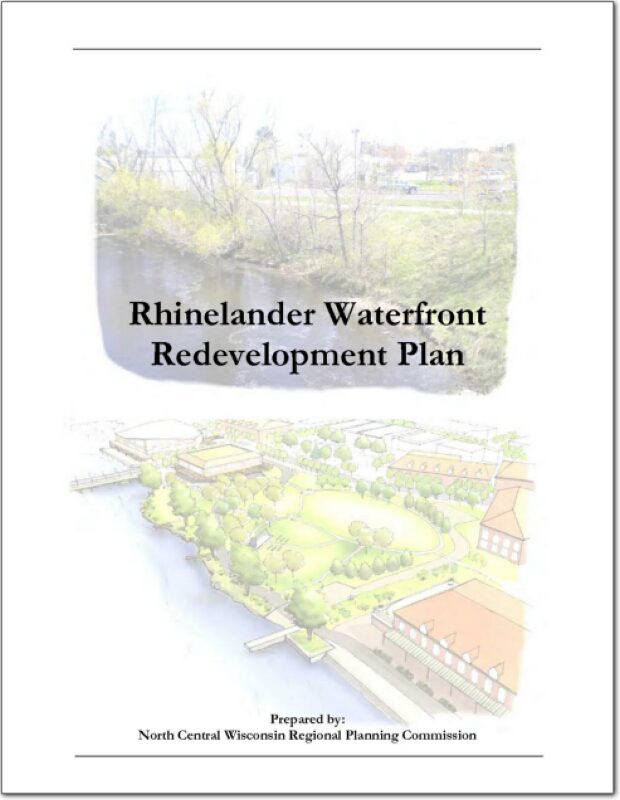Town of Tomahawk Road Surface Management Plan – 2009
A roadway management plan for a local street system provides a community with the ability to plan for future roadway improvement. With a roadway management plan in place, the limited resources allocated to local roads can be better spent. The overall goal of the Roadway Management Plan is to assist municipalities make better decisions on the improvements to the local road system.
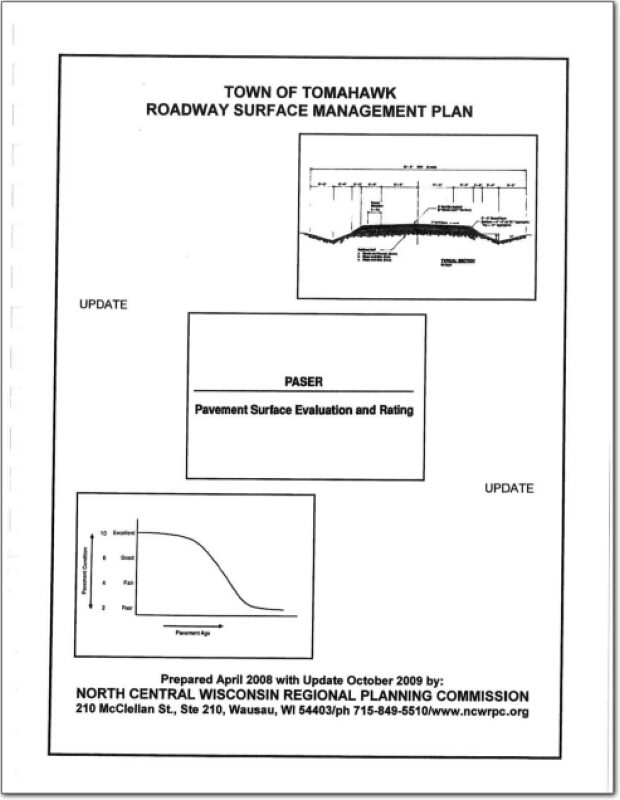
Town of Nashville Comprehensive Plan – 2009
The Town of Nashville Comprehensive Plan of 2009 is a document that describes who we are as a community and public and private resources that are available to us in planning our future. The Plan gives us a comprehensive statistical profile of our community as of 2000 and makes a comparison of change since 1990 on a town, county and state level.
The Plan is a tool and not a description of end results or future planning goals. Citizens of the town and the Town Board and its Plan Commission can draw from the information in the Plan to shape the future development of the community and set realistic goals in planning decisions. What the town’s future will look like remains the determination of its citizenry. The Plan serves as a database and guide for this process.
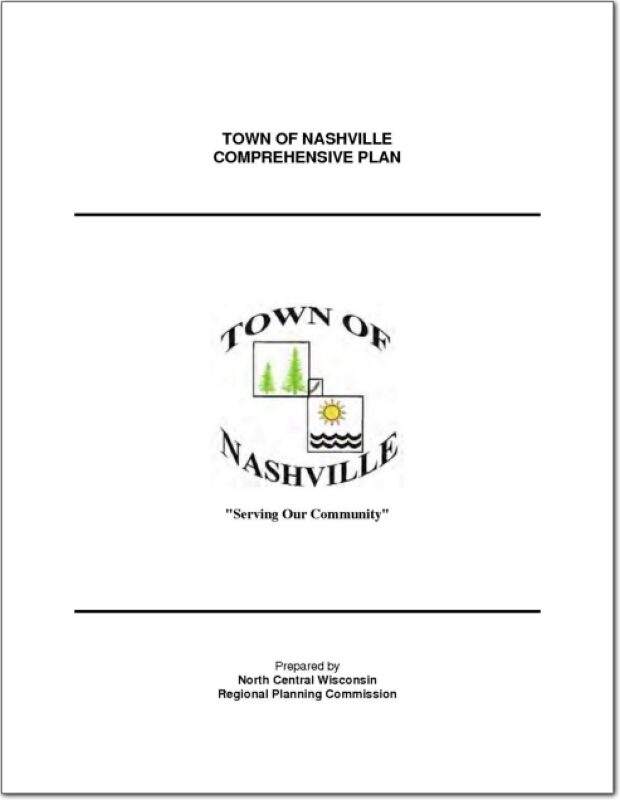
Town of Summit Plan 2009
The Town of Summit Comprehensive Plan is intended to be the will-of-the-people in writing for land use planning. When the people’s desires in this community change, so too should this document. Local officials shall use this document to save time when making land use decisions. The Plan will also assist in development and management issues of public administration by addressing short-range and long-range concerns regarding development, and preservation of the community.
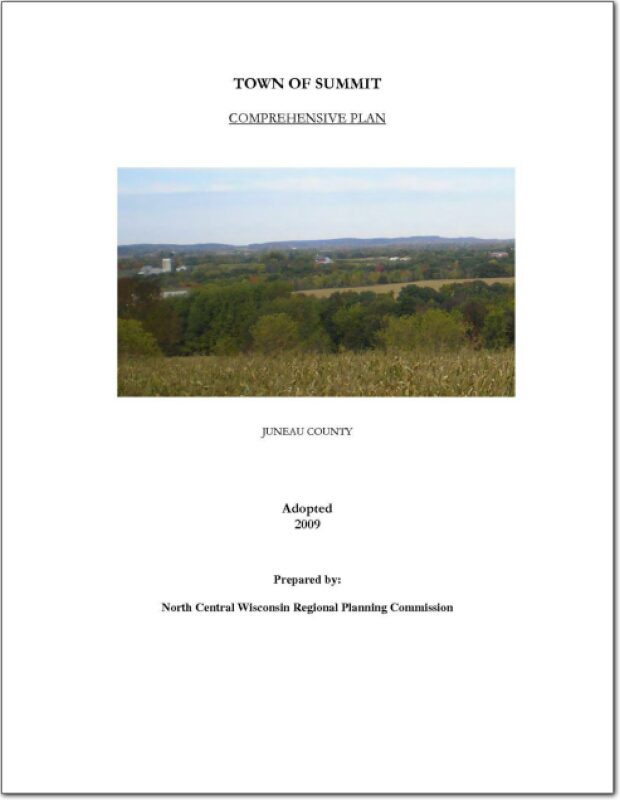
Town of Scott Traffic Count Report – 2009
The Town requested general information with regard to traffic volumes on these roads. The attached reports summarize the data from these sites.
Town of Ainsworth Traffic Count Report – 2009
The Town requested general information with regard to traffic volumes on these roads. The attached reports summarize the data from these sites. For each location, there is a vehicle volume report, with average hourly vehicle counts by lane direction and totals for the counting period, a combined speed report with totals combined for both directions by speed group and time, and a combined classification report with totals combined for both directions by type of vehicle and time.
Town of Cassian Traffic Count Report – 2009
The Town of Cassian requested traffic counting services from the North Central Wisconsin Regional Planning Commission for two locations within the Town.
Town of Rolling Traffic Count Report
The Town requested general information with regard to traffic volumes on these roads. The attached reports summarize the data from these sites. For each location, there is a vehicle volume report, with average hourly vehicle counts by lane direction and totals for the counting period, a combined speed report with totals combined for both directions by speed group and time, and a combined classification report with totals combined for both directions by type of vehicle and time.
Adams County All Hazards Mitigation Plan Update 2009
The development of the Adams County All Hazards Mitigation Plan Update is a response to the passage of the Disaster Mitigation Act of 2000 (DMA2K). On October 30, 2000, DMA2K was signed into law by the U.S. Congress in an attempt to stem the losses from disasters, reduce future public and private expenditures, and to speed up response and recovery from disasters. This Act (Public Law 106-390) amended the Robert T. Stafford Relief and Emergency
Assistance Act.
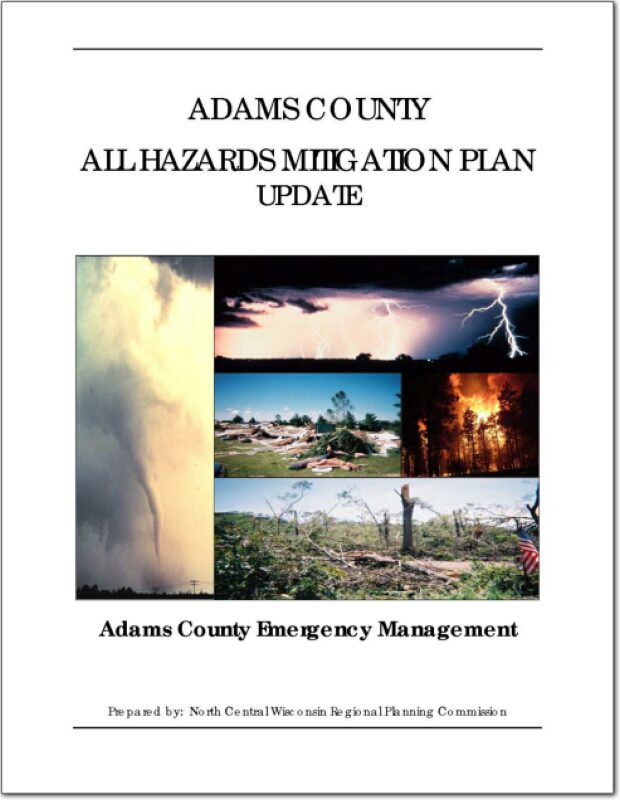
City of Rhinelander Waterfront Redevelopment Plan – 2009
The waterfront has always played a significant role in the City of Rhinelander. In the 1870’s, explorers traveled up the Wisconsin River to the confluence of the Wisconsin and Pelican Rivers in search of timber, and found an ideal location for what would eventually become the City of Rhinelander. Since then the river has been used as a mode of transportation, for commerce and for recreation. Development patterns along the river, particularly in the downtown area, reflect the important role the river has played in commerce. Today, however, the river’s role in commerce has diminished to some degree and the need to explore new ways to best utilize the riverfront are necessary.
